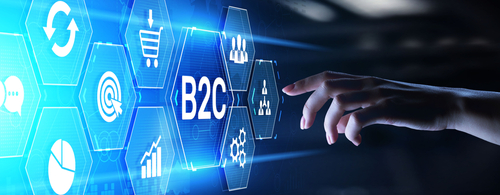Table of Contents
Updated by 01.11.2025
B2C Payments: Big Growth, Big Deal
Activity in the digital consumer-to-business (C2B) space has risen sharply over the past few years and especially in the nearly 18 months since the COVID-19 pandemic reared its head in the U.S. However, another segment digital business-to-consumer (B2C) payments is heating up as well.

According to Aite Group, companies now issue more than 1.9 billion B2C payments annually, with about two-thirds currently disbursed electronically rather than by paper check. Aite calls B2C the “next wave of growth” in mobile payments and, in a study conducted several years ago, noted that nearly three-fourths (74 percent) of U.S. households with consumers between the ages of 18 and 65 had received “some type of funds disbursement”.
Digital B2C Equals Big Savings
Unquestionably, the financial advantages of B2C are contributing to its growth. For example, Aite found that in the U.S. alone, eliminating disbursement checks everything from claims disbursement checks sent by insurance companies to those sent out by real estate management firms returning tenants’ security deposits can save U.S. merchants $1 billion annually. This is easy to see considering the price tag attached to processing paper checks, which averages $6 per instrument and can, according to some sources, be as high as $25. based the average cost of processing a paper check is $6 and can, by some estimates, be as high as $25.
Statistics from other studies add more fuel to the fire. Notably, U.S. companies reportedly shell out approximately $26 billion to $54 billion per year to issue paper checks. On average, the “tab” for writing just 500 paper checks per month, with three costs more than $1,200 in employee labor alone. When supplies, check printing and other related expenditures are figured into the equation, the total financial outlay is $2,045 monthly or $25,540 annually.
Larger businesses and other entities whose check-issuing volume exceeds 500 such instruments per month incur an even larger expenditure than this. Admittedly, boarding the digital B2C disbursements train won’t bring companies’ B2C-issuing expenditures to $0, but such a move will yield a great financial advantage.
Customer Centricity Sparks Change
Businesses’ heightened awareness that digital B2C enables them to cater to ever-more-demanding customers is also leading the shift away from manual B2C disbursements. Increasingly, savvy retailers understand heightened consumer demand for immediate or rapid access to funds. Such demand has increased with pandemic-induced economic hardships; even some consumers who could once wait to receive funds by check now need payments to arrive in their hands faster.
Merchants that accommodate these changes stand a far better chance to cultivate and retain loyal customers, in turn generating increased revenue and bolstering the bottom line. This is particularly true of younger consumers, who have not only grown up with digital payments but prioritize immediate gratification even more than older customers.
Recent studies from PwC and Accenture are proof positive that this is so. The studies show that nearly 80 percent of consumers will readily seek out a new insurance provider after a negative claims experience, including a delayed or lost claims payment issued using a paper check. And of consumers queried for a study by Qualitics, only 24 percent said they want to pay their healthcare bills by check. It makes sense to assume that an equally small number of consumers would wish to receive reimbursements for healthcare or any other B2C payment in check form rather than digitally.
Digital B2C disbursements can be efficiently handled with push payments from merchants’ bank accounts to consumers’ bank accounts, taking advantage of real-time ACH. They can also be issued via prepaid cards or to consumers’ debit cards. Schedule a consultation to learn how E-Complish makes these disbursements easy and seamless.
Table of Contents

